Types of Movements:-
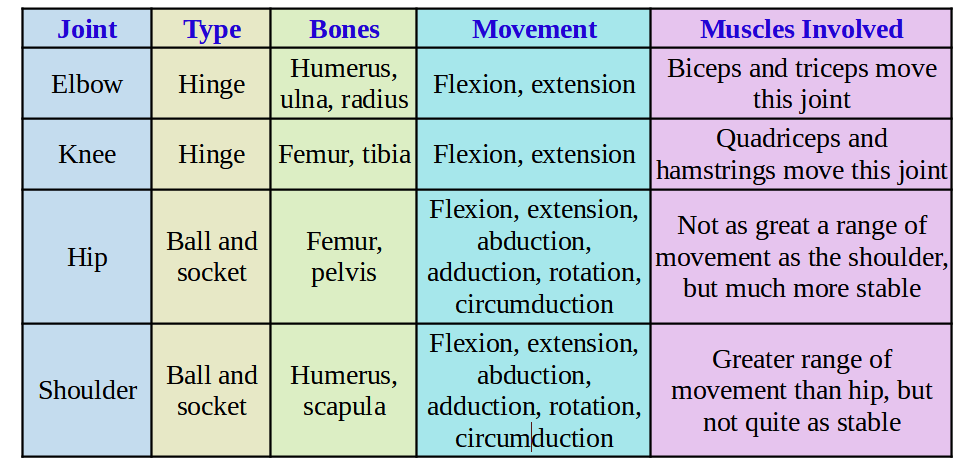
Flexion & Extension
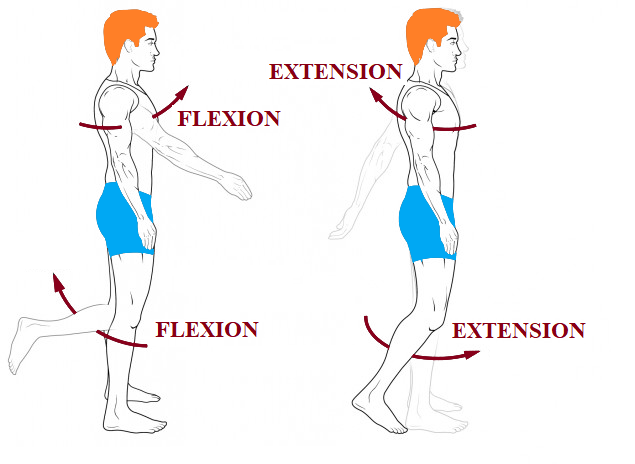
Flexion & Extension occur in the Sagittal Plane.
Flexion refers to a movement that occurs with a decrease in the joint angle between two body parts. Flexing the elbow is decreasing the angle between the ulna and the humerus. When the knee flexes, the ankle moves closer to the buttock, and the angle between the femur and tibia gets reduced.
Extension refers to a movement that occurs with an increase in the joint angle. Extension of the elbow is increasing the angle between the ulna and the humerus. Extension of the knee straightens the lower limb.
Abduction & Adduction
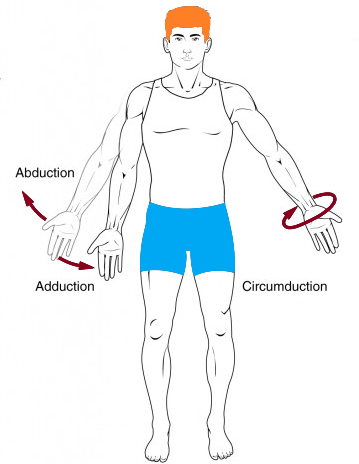
Abduction and Adduction occur in the Transverse Plane.
Abduction is a movement away from the midline – of the body in the transverse plane.
For example, abduction of the shoulder raises the hands out wards to the sides of the body and away from the body.
Adduction is a movement towards the midline of the body.
Adduction of the of the shoulder brings the hands inwards to the sides of the body.
Circumduction –is a circular movement the limb that includes flexion, extension, abduction, adduction and rotational movements.
Rotation

Rotation occur in the Transverse Plane.
Rotaion is the right or left movement in the transverse plane like the movement of the neck or the trunk.
Internal or Medial Rotation: Rotation in the Transverse plane while moving towards the mid-line of the body.
Example: Rotation of the hip joint causes the leg to move in such a way so that the toe points inward.
External or Lateral Rotation: Rotation in the Transverse plane while moving away from the mid-line of the body.
Example: Rotation of the hip joint causes the leg to move in such a way so that the toe points outward.
Elevation and Depression
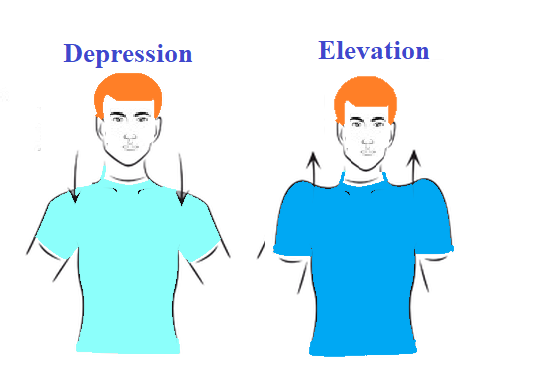
Elevation & Depression occur in the Frontal Plane.
Elevation is movement of the Scapula in Superior direction ( towards the head) in the Frontal Plane.
Depression is movement of the Scapula in Inferior direction ( away from the head in the Frontal Plane.
Example: Shoulder Shrug movement
Pronation & Supination
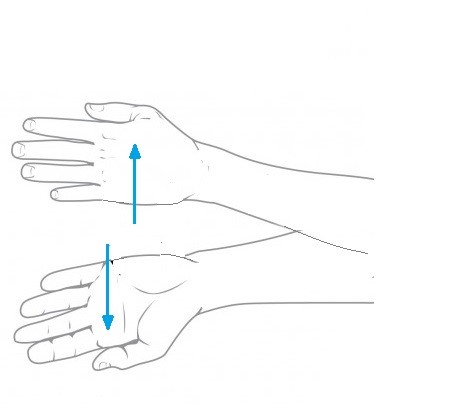
Proximal and Distal Radioulnar joints are involved in Pronation and Supination.
Pronation means when the palm is facing downwards.
Supination occurs when the palm is facing upwards.
Example: Movements like operating a screwdriver or turning a key are examples of pronataion and supination.
Dorsiflexion & Plantar flexion
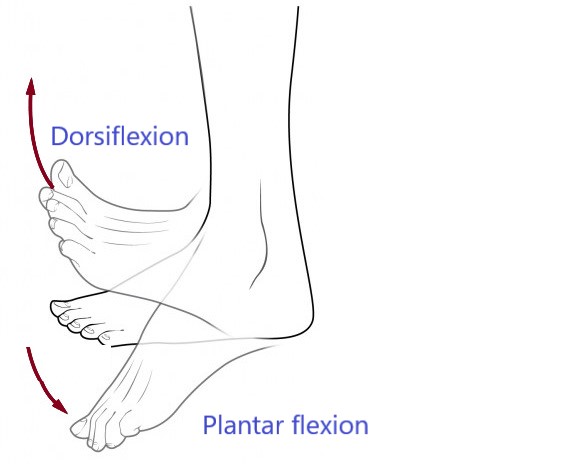
Dorsiflexion & Plantarflexion occur in the Sagittal Plane.
Dorsiflexion is the movement of the foot anteriorly in the Sagittal Plane at the ankle joint.
During plantar flexion, the foot moves posteriorly in the Sagittal Plane at the ankle joint.
Protraction & Retraction
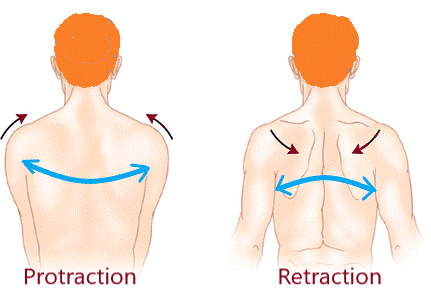
Protraction & Retraction occur in the Transverse Plane.
Example: Protraction occurs when pushing against a force or throwing a ball.
Protraction is the movement of the scapula away from the spine while bending forward in the transverse plane.
Retraction is the movement of the scapula towards the spine in a chest outward position in the transverse plane.
Protraction and retraction cause anterior-posterior movements of the scapula or mandible.
Eversion & Inversion

Inversion and eversion occur primarily at: Subtalar (talocalcaneal) joint.
Eversion is the movement related to abducting the ankle. This causes the foot to tilt away from the midline of the body.
Inversion is the movement related to adducting the ankle. This causes the foot to tilt towards the midline of the body.
Movement occurs in the frontal plane:
Opposition
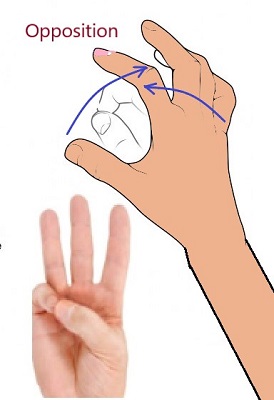
Opposition is the diagonal movement of the thumb across the palm surface so that the tip of the thumb can touch the tip of any other finger.
It involves the first Carpometacarpal joint and by flexion and abduction of the thumb the movement is done.
Returning the thumb to its normal anatomical position is called Reposition.
Radial & Ulnar Deviation
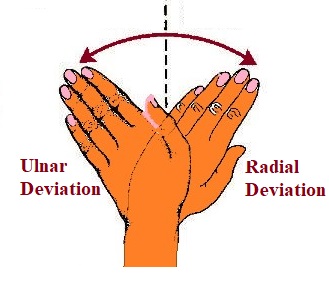
Radial and Ulnar Deviation ccur in the Frontal Plane.
Radial Deviation is the movement of the wrist towards the side of the thumb in abduction.
Ulnar Deviation is the movement of the wrist away from the thumb in adduction.
It involves the first Carpometacarpal joint and by flexion and abduction of the thumb the movement is done.
Returning the thumb to its normal anatomical position is called Reposition.

